If you visit Munich (Germany) in October then you have to go to the October fest. Therefor you need a traditional Bavarian costume which is also known as a dirndl. Can you imagine wearing an African Dirndl with remarkable patterns? I would recommend you to try one of the African Dirndl by NOH NEE, a black-owned fashion brand which combined traditional Bavarian dirndls with colourful African fabrics. I talked to Rahmeé Wetterich of NOH NEE about how they started their business and how the idea of „The Project Justine – Train the Trainer” came up.
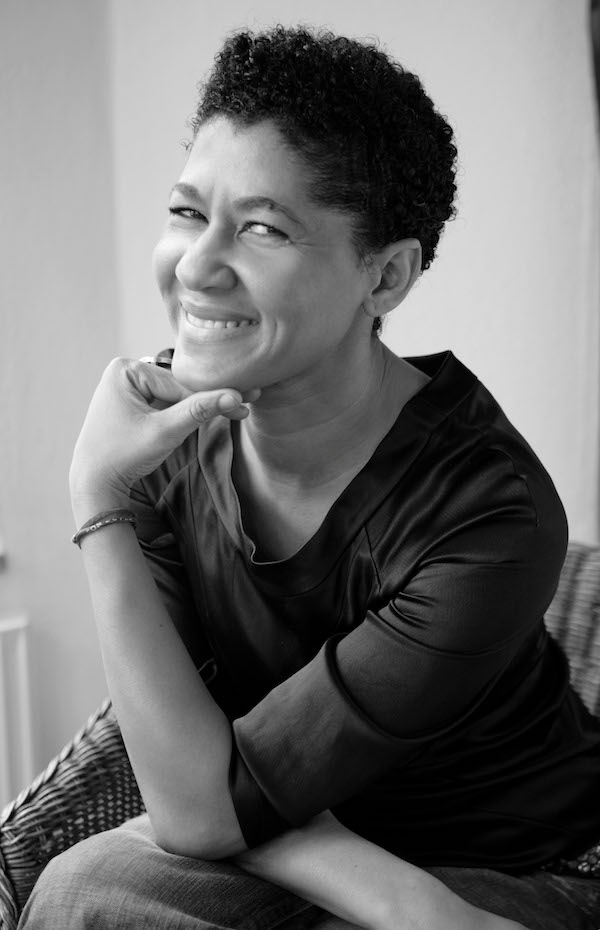
Interview with Rahmeé Wetterich of NOH NEE
Frolicious: Please tell us a little bit about your brand NOH NEE and how the idea of combining colourful and elaborate african wax with a bavarian cut (Dirndl) originated?
Rahmeé Wetterich: My sister Marie is a seamstress and she’s always liked to work and experiment with African fabrics. Our family is originally from Cameroon but it has had the chance to mingle with Bavaria for quite a while. We are already living here in the 3rd generation. The mixture of both cultural influences that we experience every day was primarily responsible for Marie’s idea to combine traditional Bavarian costume with African wax print.
Frolicious: What motivated and inspired you to get started?
Rahmeé Wetterich: It was my own enthusiasm that made me want to continue and work out Marie’s idea. When I saw the first African Dirndl (by that time I didn’t even know that it had been made by my sister) it was the first time in my life that I could imagine myself wearing something like this. Until that point I’d never worn a Dirndl once, and even after 35 years of living in Bavaria I hadn’t planned to do so. This excitement that, as it turned out, was also shared by friends and family, was the ultimate reason why I joined in.

Frolicious: What were the first 3 steps you took to get your business up?
Rahmeé Wetterich: The first important decision we had to make was to find a suitable name for our idea and create a label for our African Dirndls. Especially for Marie it was important that the name also had a meaning. NOH NEE is translated to “God’s gift” in Swahili. For me, it was the corporate identity and how we were going to present ourselves another essential step towards the creation of our business. The third important part was the creation of our product, the NOH NEE Dirndl: How was it going to look like, what was it that made it special, and most importantly, how was it to become a one-of-a-kind Dirndl that would easily recognized?

Frolicious: In 2015 you created „The Project Justine – Train the Trainer“. How did the idea come up?
Rahmeé Wetterich: We already came up with this idea in 2012, shortly after the foundation of NOH NEE. Sadly, we had to realize that almost all of the fabrics we were using for the Dirndls didn’t come from Africa but were actually made in the Netherlands. It has always been our concern that Africans aren’t left out but can partake in the production and that they can somehow profit from our idea as well. We wanted true African wax prints, that were actually made in Africa. Since then, we’ve been hoping for a cooperation at eye level to make this possible and with our production facility that we built through The Project Justine, we are one step closer to achieving it.
Frolicious: How does „The Project Justine – Train the Trainer“ work?
Rahmeé Wetterich: Justine had already been working as a seamstress in Benin, but her skills weren’t meeting the requirements of the German quality standards, and this is where we stepped in. She came to Germany and we trained her with a continuative apprenticeship. 2015 we launched a first collection with her, that is now being sold in our stores in Munich and also available in our online store. The knowledge she already possessed was only completed by our training. Now she can pass on this well-grounded knowledge to new seamstresses in Benin that are being trained by her. Through this concept we can reach more future seamstresses in Benin, who can then pass it on to more apprentices on their part.
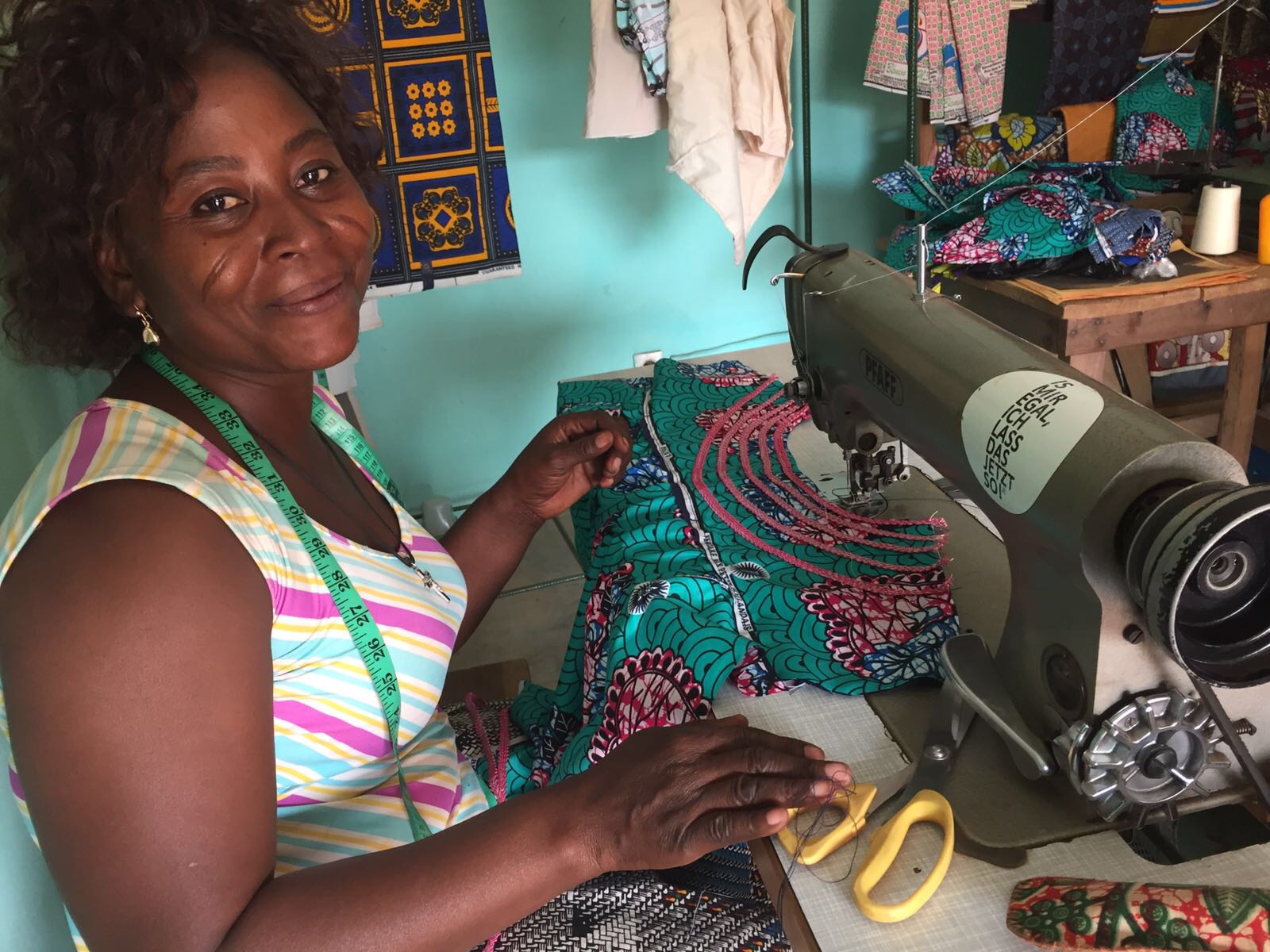
Frolicious: How is The Project Justine – Train the Trainer funded and what has been the most effective way of raising awareness?
Rahmeé Wetterich: When we successfully launched our first NOH NEE Benin collection at the end of 2015, we had the proof that our idea would really work. Simultaneously, we heard about other women in Benin who were really interested and wanted to work with us. To be able to live up to this positive resonance we decided to take action, and since 2016 The Project Justine has been a registered society. In the near future we want to build a training center there.
We reach out to our community via Facebook and we also inform about our project on our blog. Once or twice per year, we host a charity event here in Munich where we raise awareness for our project and try to gain more supporters. Since the whole project is still in the making, there are many more steps we are going to take.
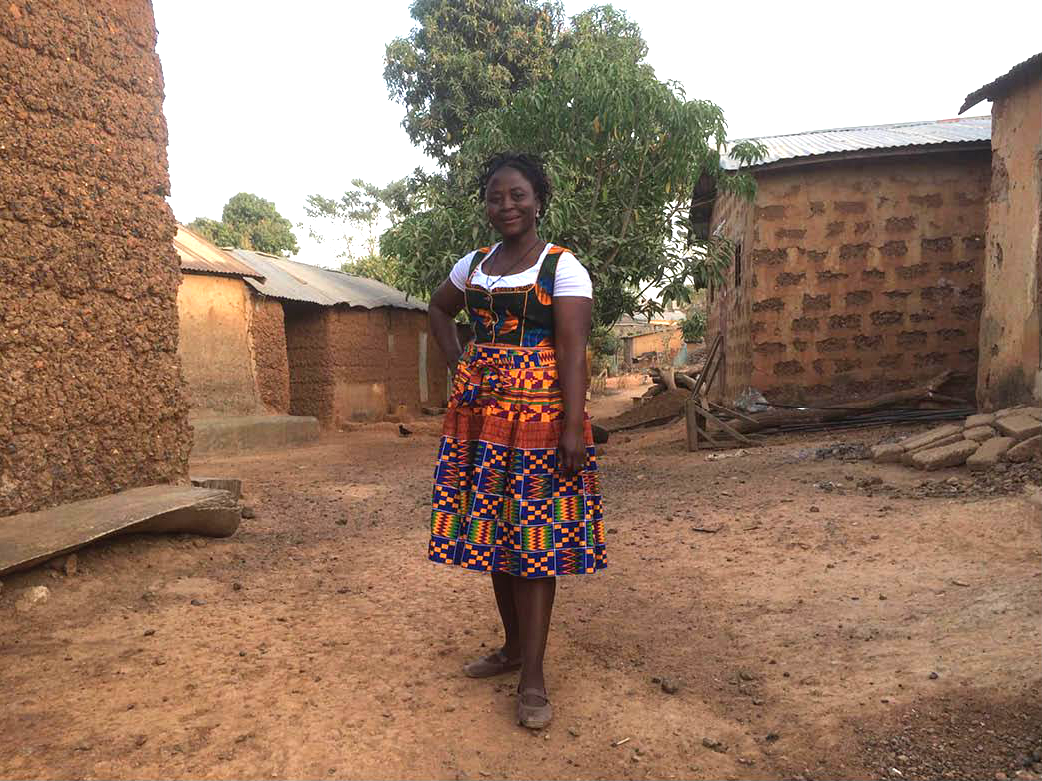
Frolicious: What has been the biggest challenge so far with The Project Justine – Train the Trainer?
Rahmeé Wetterich: The biggest challenge for us was the completion of our first collection with NOH NEE Benin, after we’d trained Justine, and to do our aim justice: “made in Africa”. It was important for us to focus on this intent during all steps of production; to buy fabrics that were actually made in Africa and also to have our Dirndls of the NOH NEE Benin collection sewn by Benin people. First we were a little concerned if this was going to work just like we’d imagined it to.
Frolicious: What has been your proudest moment since you have created the project?
Rahmeé Wetterich: A very special moment for me was when I handed over to Justine the tags that were specifically made for the NOH NEE Benin collection. She was so excited that she literally exclaimed in delight. Before that, her collection had only been a phantom, and now it had become reality. I am sure it was a key moment for her as well.
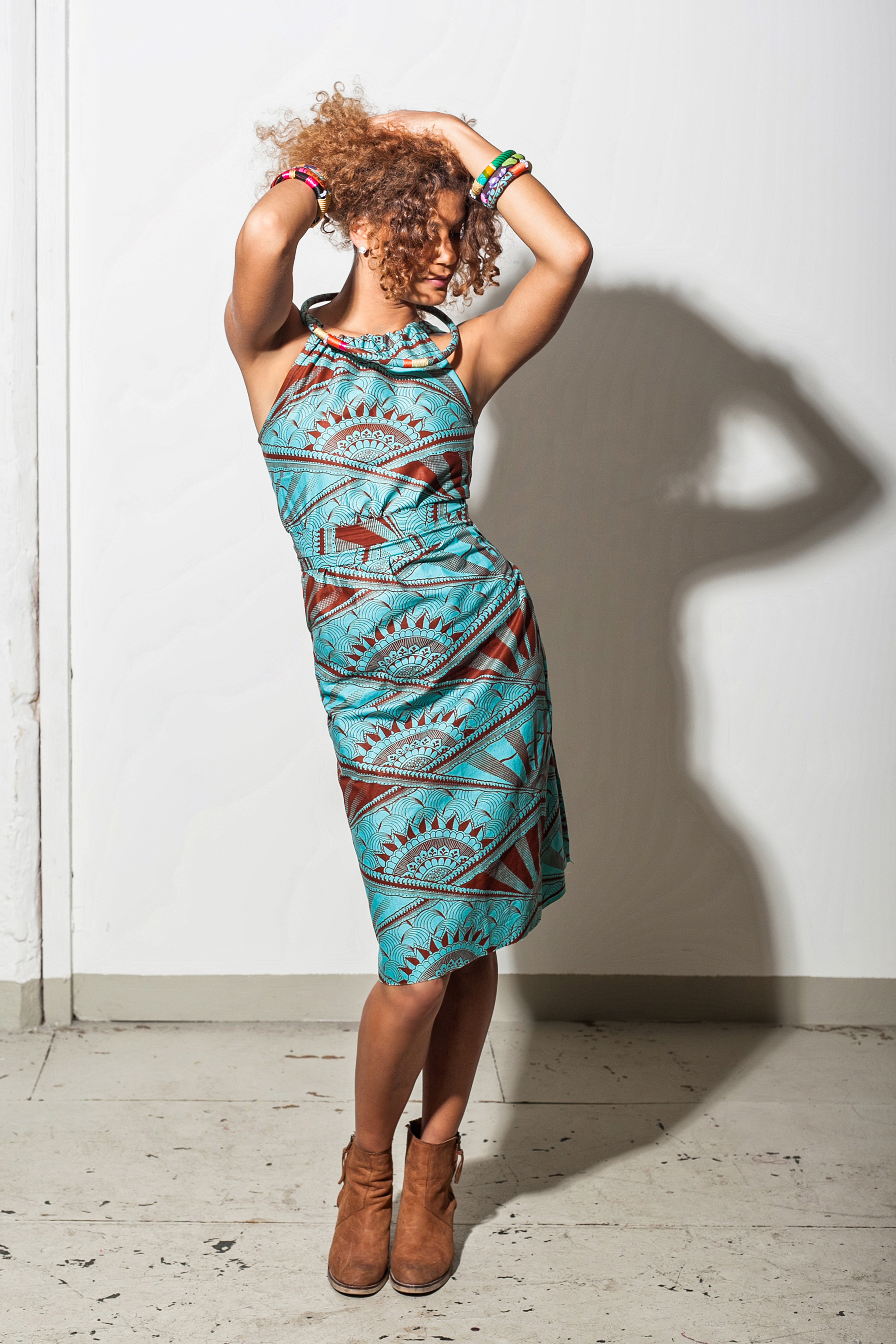
Frolicious: How much of the price people pay for a dress goes back to the seamstresses? Rahmeé Wetterich: We don’t produce all year long and the Dirndls are mostly sold during a short summer season here in Germany, that is why we don’t pay our employees per piece. Rather, we created the basis for Justine’s work: We equipped her with the necessary tools and we bought the fabrics. We also pay for the premises and the running costs. In addition to that, and upon her own wish, Justine is paid a regular salary on a monthly basis, which is higher than what a normal seamstress would earn in Benin. This gives her the security for a self-determined life when production is low. She’s free to work and take up additional orders if she likes.
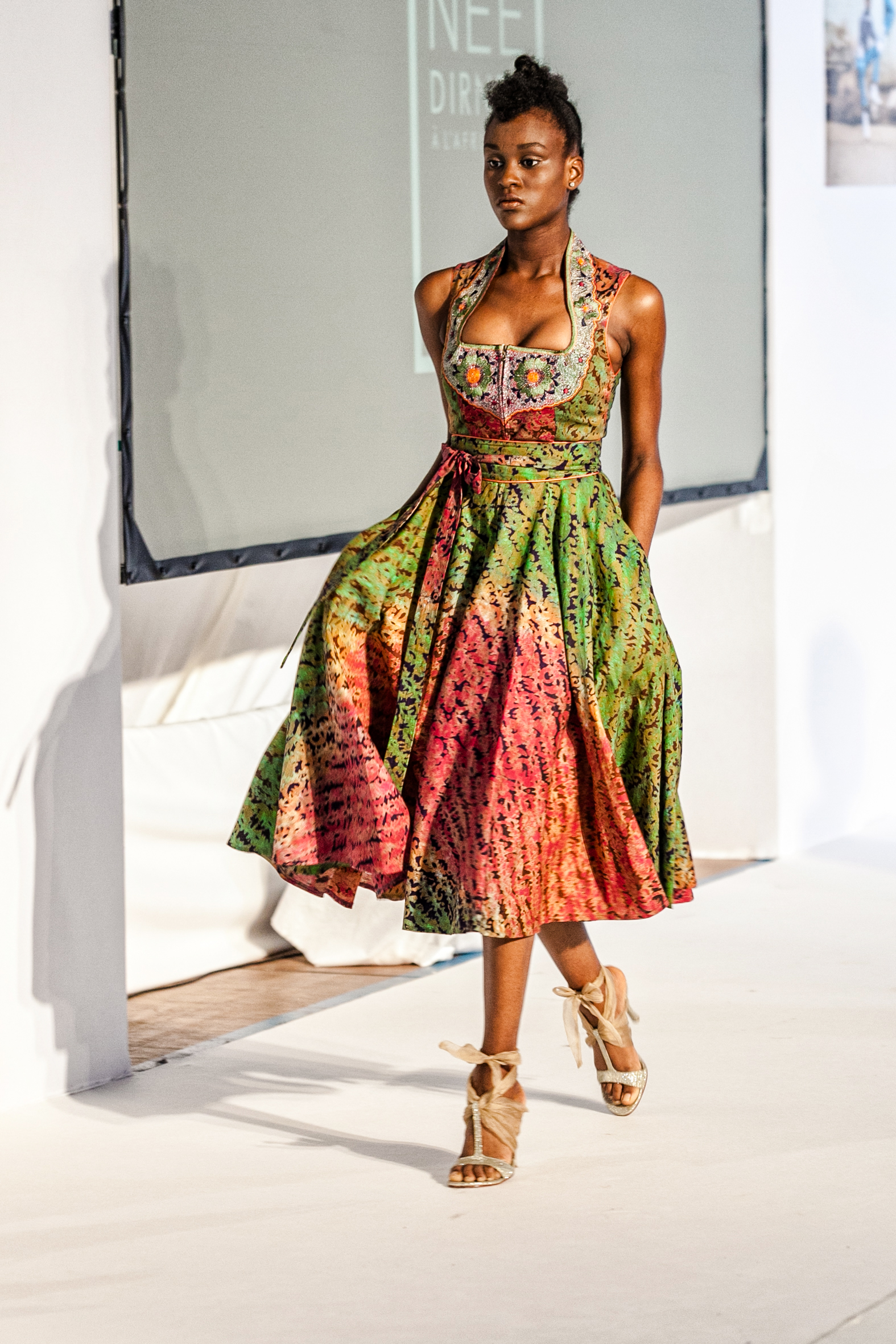
Frolicious: What are your future plans for „The Project Justine – Train the Trainer?
Rahmeé Wetterich: At the moment we are planning a whole training center for people in Benin who are interested in receiving a training and who want to work for an autonomous manufacturing plant which in the long term will also take in orders directly from African businesses. The people in Benin shouldn’t be dependent on us, we much more want to be one of their customers upon many others.
The cooperation with Justine started out as a trial run, but by working out so great it showed us that we actually can make a contribution with this project. We wish for more happy people just like Justine that receive a training which enables them to make a living and have a real prospect in their home country.
This year we want to use our charity events to collect the financial means so we can buy a plot where we’ll start building the training center in 2018. In addition, we just started planning our third NOH NEE Benin collection.
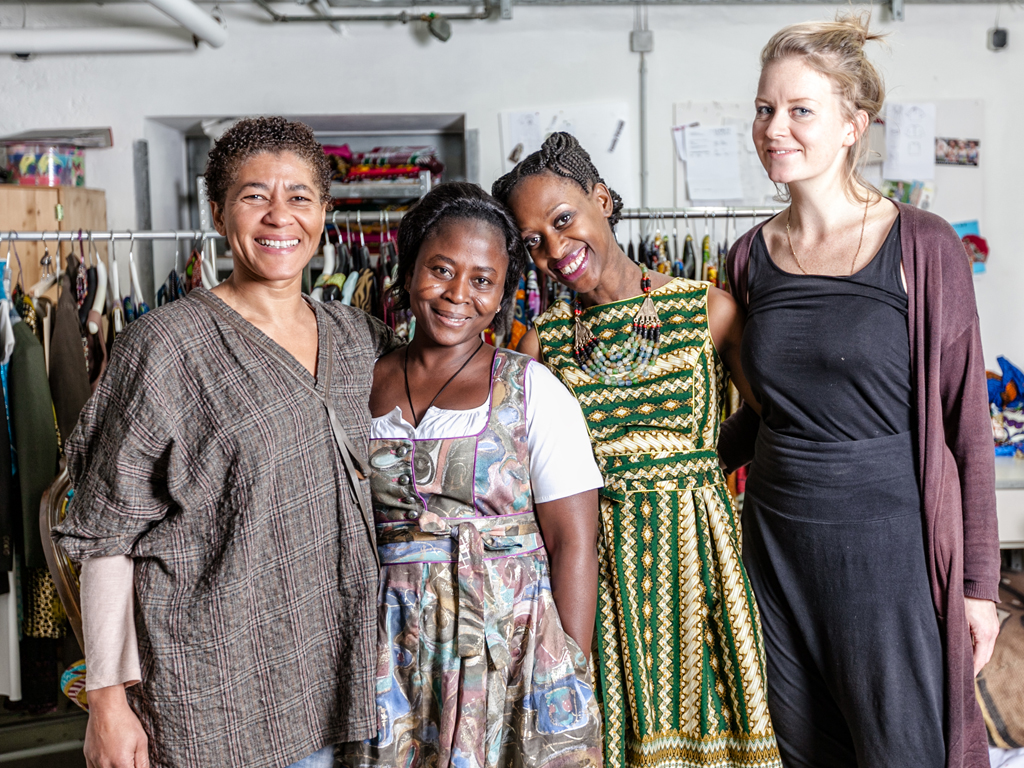
///
NOH NEE is more than just clothes. It is a fashion brand that encourages women to celebrate themselves while building their confidence. I am sure to see some incredible things from this company;NOH NEE with its African Dirndl is definitely one to keep an eye on. Check them out. #herbizness
Would you rock one of the African Dirndl by NOH NEE?
///
Explore NOH NEE here:
Website, Instagram, Facebook, The Project Justine – Train the Trainer
Images by Attila Henning

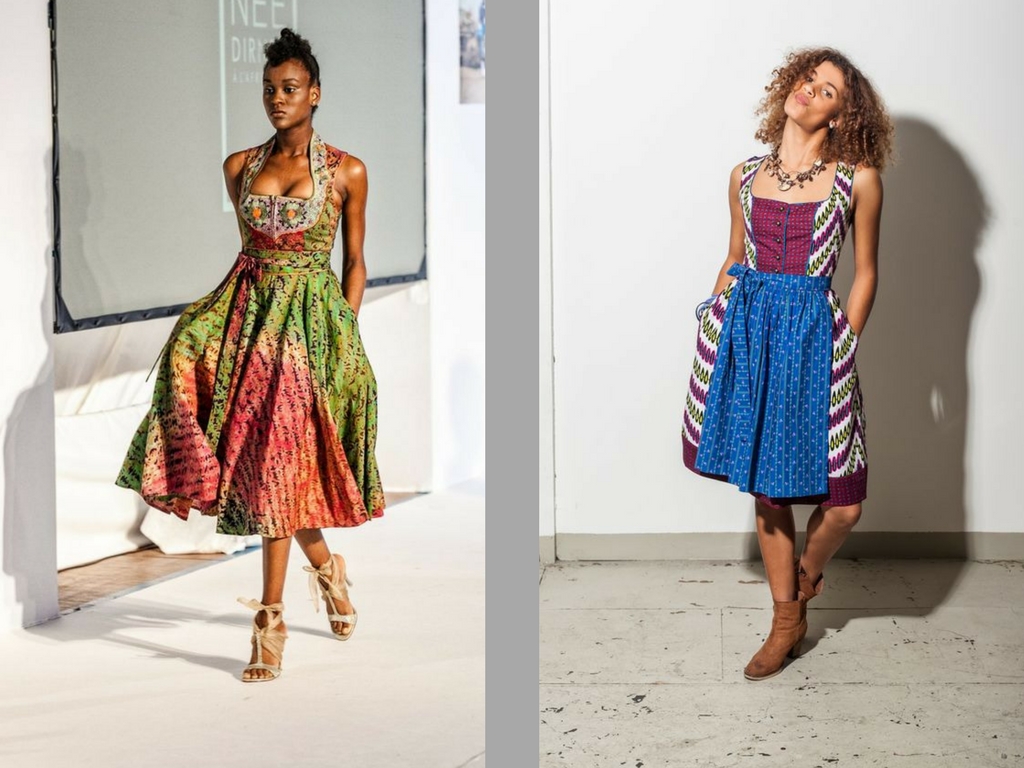

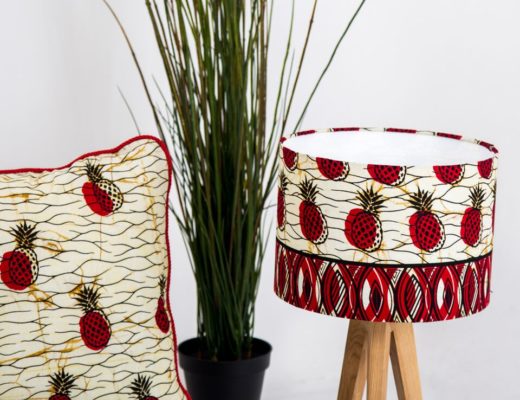



2 Comments
Yes, actually I would! I’ve been to Oktoberfests in Germany and Austria. With and without dirndls. People are always going to look because black skin is still not very common in these spaces (although it is slowly improving). I’ve gotten smiles and nods from strangers, wearing a traditional dirndl, so I can imagine that dirndls in african prints would blow people’s minds in a positive way.
In Bavaria and Austria, women often own more than one dirndl, and wear them more often than women who live further north. It’s like an women’s alternative to the little black dress. It can be worn to church on sunday, to Oktoberfest, blinged out to the theater. Every year there are new dirndl colours and trends… So these gorgeous dirndls could actually gain a wider market (than just Germans of african descent), once they can consistently show rhat the craftsmanship is up to scratch!
[…] Looking (online) for Dirndl or bavarian costumes you might stumble across the words ‘Landhaus‘, ‘Trachten‘ and ‘Dirndl‘. Basically, it is about all the same, but also not exactly. To explain it easy and short, Trachten is the actual thing. They made the evolution from workwear to nowadays daywear. They are usually plain and functional, to say so. Anything with the word Landhaus is way more casual. Landhaus Fashion might be an embroidered white blouse or regular jeans, also embroidered. The combination of both, for females, is the Dirndl. A Dirndl Dress is more fashionable and chic than a Trachten Dress, but still way more acceptable than anything Landhaus. The Dirndl is available in various colours and also relies on Trends. […]